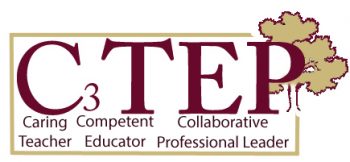
University of Maine at Farmington Teacher Education Unit
Conceptual Framework
UMF Teacher Education: Empowering reflective, ethical, compassionate
educators and inspirational leaders for a diverse world.
Undergraduate Philosophy and Guiding Principles
Our candidates will become educational leaders who are caring teachers, competent educators and collaborative professional leaders (C3TEP). These guiding principles and beliefs reflect the ideals we hold for ourselves, our candidates, and the students and communities with whom they will work.
Caring Teachers
- Build respectful relationships for all students
- Create communities of learners
- Support and encourage successful learning
- Honor and respond to differences
- Utilize knowledge of human development
Competent Educators
- Design, plan, implement and evaluate instruction
- Use best practices for instruction and assessment
- Know content and strategies for integration
- Communicate clearly and effectively
- Solve problems creatively and constructively
- Use the tools of a changing world
Collaborative Professional Leaders
- Collaborate effectively with families, communities and colleagues
- Practice reflective, self-directed, life-long learning
- Demonstrate a commitment to ethical and legal responsibilities
- Contribute to and lead in diverse societies
Essential Goals and Purposes
Our essential goals and purposes are embodied in the Maine Common Core Teaching Standards and our candidate diversity expectations. Within the context of our programs, candidates are evaluated based on important knowledge, skills and dispositions articulated in each of these standards and expectations.
Diversity Expectations
Candidates will:
- Examine personal experiences, beliefs, and biases and determine implications for professional practice.
- Demonstrate commitment to developing learning environments and experiences where all students learn about, understand and respect diversity.
- Demonstrate knowledge about the ways individual and group differences impact students, families, communities, and society and identify implications of these differences for professional practice.
- Plan instruction, assessment, and learning environments to address the needs and differences of individuals and groups.
- Access information about the student, family, learning environment, community, and societal factors that may impact student learning and use that knowledge to equitably improve the conditions for learning.
The University of Maine at Farmington’s Goals and Purposes and the Common Core/InTASC Teaching Standards
Learner Development
Standard # 1 Learner Development
The teacher understands how students learn and develop, recognizing that patterns of learning and development vary individually within and across the cognitive, linguistic, social, emotional, and physical areas, and designs and implements developmentally appropriate and challenging learning experiences.
Standard #2 Learning Differences
The teacher uses understanding of individual differences and diverse cultures and communities to ensure inclusive learning environments that allow each learner to reach his or her full potential.
Standard #3 Learning Environments
The teacher works with learners to create environments that support individual and collaborative learning, encouraging positive social interaction, active engagement in learning, and self motivation.
Content
Standard #4 Content Knowledge
The teacher understands the central concepts, tools of inquiry, and structures of the discipline(s) he or she teaches and creates learning experiences that make these aspects of the discipline accessible and meaningful for learners.
Standard #5 Innovative Applications of Content
The teacher understands how to connect concepts and use differing perspectives to engage learners in critical/creative thinking, and collaborative problem solving related to authentic local and global issues.
Instructional Practice
Standard #6 Assessment
The teacher understands and uses multiple methods of assessment to engage learners in their own growth, to document learner progress, and to guide the teacher’s on-going planning and instruction.
Standard #7 Planning for Instruction
The teacher draws upon knowledge of content areas, cross-disciplinary skills, learners, the community and pedagogy to plan instruction that supports every student in meeting rigorous learning goals.
Standard #8 Instructional Strategies
The teacher understands and uses a variety of instructional strategies to encourage learners to develop deep understanding of content areas and their connections, and to build skills to access and appropriately apply information.
Professional Responsibility
Standard #9 Reflection and Continuous Growth
The teacher is a reflective practitioner who uses evidence to continually evaluate his/her practice, particularly the effects of his/her choices and actions on others (students, families, and other professionals in the learning community), and adapts practice to meet the needs of each learner.
Standard #10 Collaboration
The teacher seeks appropriate leadership roles and opportunities to take responsibility for student learning, to collaborate with learners, families, colleagues, other school professionals, and community members to ensure learner growth, and to advance the profession.
